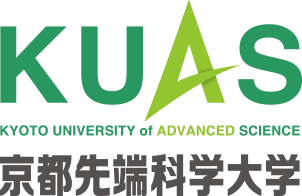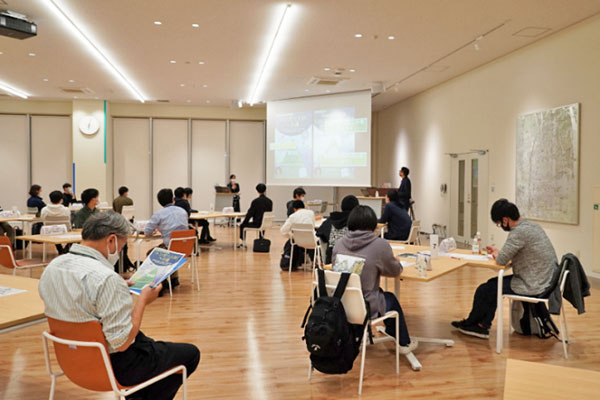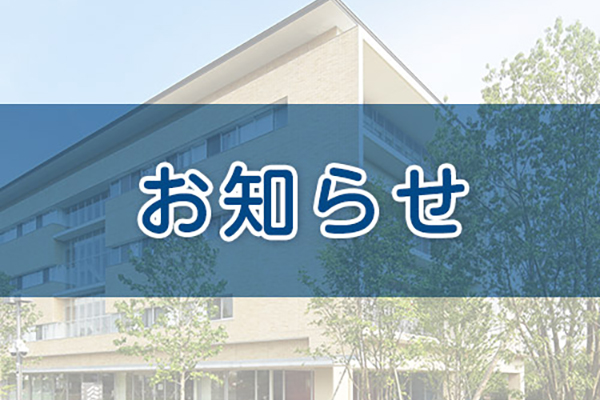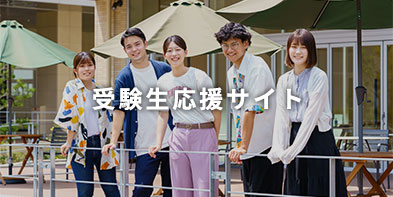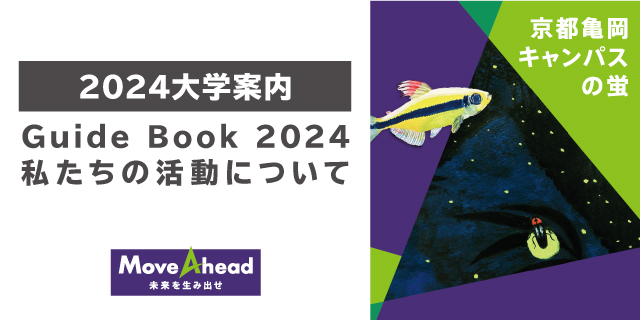本学教員の生津資大教授(工学部/専門分野:ナノメカニクス、ナノテクノロジー、機能性材料)が率いるナノメカトロニクス研究室所属の進藤美知子研究員が、「発熱ナノ粒子の作製と発熱特性制御」に関する研究成果で、国際会議MNC2019(International Conference on Microprocess and Nanotechnology)のMost Impressive Poster AwardならびにJJAP(Japanese Journal of Applied Physics)Outstanding Paper Awardをダブル受賞しました。
2種類の金属を数ナノメートル程度の厚みで積層堆積させた金属多層膜に外部刺激を与えると、異種金属の界面から原子拡散が起こり、化合物を生成して瞬間発熱します。この発熱現象をナノ粒子に付与するには粒子一粒の中に2つの金属の繰り返し構造を持たせる必要があり、進藤研究員は多孔質シリカナノ粒子の空隙にチタンを充填させることで実現しました。さらに、シリカ粒子の空隙率を制御することでシリカとチタンの原子比率を変化させ,発熱性能を変調させることに成功しました。
この成果を昨年10月の国際会議MNC2019でポスター発表した結果、最優秀ポスター賞(Most Impressive Poster Award)に選出されました。また、一連の成果は応用物理学会の英文論文誌JJAPに掲載され、優秀論文賞(Outstanding Paper Award)も受賞しました。進藤研究員は「発熱する金属ナノ粒子自体が新しいのに加え、その発熱性能を制御する技術を確立したことが受賞につながったと思います。これからも新しいアイディアを形にしていきたいです」と喜びを語っていました。今回の研究成果の発熱ナノ粒子は、医療分野では健康な細胞を傷つけずにがん細胞を効率よく死滅させる技術、半導体デバイス産業では高効率な基板の接合技術に応用されることが期待されます。
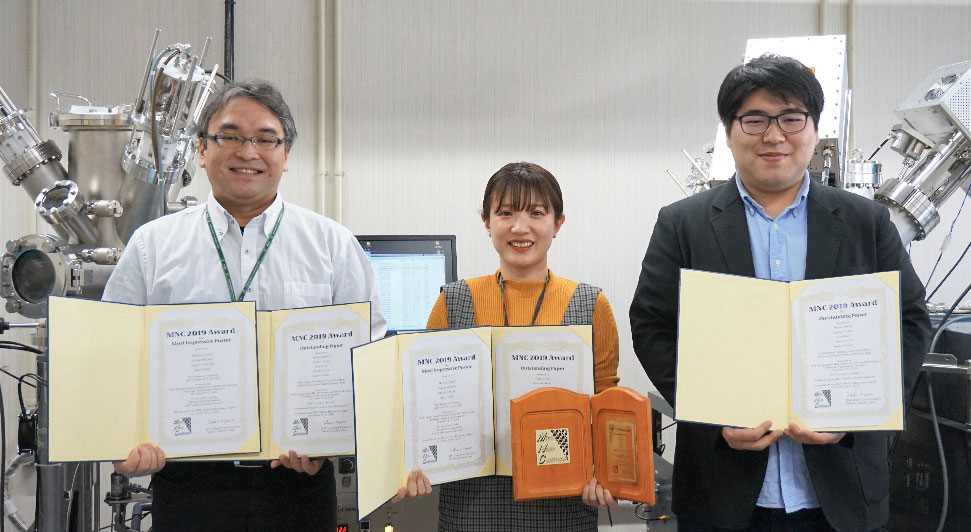
(工学部 今井 欽之)
KUAS Faculty of Engineering researcher Michiko Shindo, a member of Professor Takahiro Namazu’s Nanomechatronics Laboratory (specialising in Nanomechanics, Nanotechnology, and Functional Materials), has received the Most Impressive Poster and Outstanding Paper awards from the 33rd International Conference on Microprocess and Nanotechnology (MNC2019).
When an external stimulus is applied to a multilayer film in which two types of metal are deposited with a thickness of several nanometers, atomic diffusion occurs at the interface between the two metals followed by the formation of compounds and instantaneous generation of heat. In order to apply this exothermic phenomenon to nanoparticles, it is necessary to create a repeating structure of two metals. Ms. Shindo realised this using a combination of porous silica nanoparticles and titanium film. By controlling the porosity of the silica particles, she succeeded in controlling the exothermic characteristics by changing the ratio of silica and titanium.
After presenting her work at the Microprocess and Nanotechnology conference, October 2019, she received the Most Impressive Poster and Outstanding Paper awards. She went on to publish an academic article about her work in the Japanese Journal of Applied Physics. Ms. Shindo said, "In addition to the heat-generating metallic nanoparticles being new, I think that establishing a mechanism to control the heat-generating performance led to the awards. I would like to continue to shape new ideas." The heat-generating nanoparticles resulting from this research are expected to be applied in the medical field to technology that efficiently kills cancer cells without damaging healthy cells, and in the semiconductor device industry to highly efficient substrate bonding technology.

(Tadayuki Imai, Faculty of Engineering)
- 対象者
- 学部・学科
- 内容
